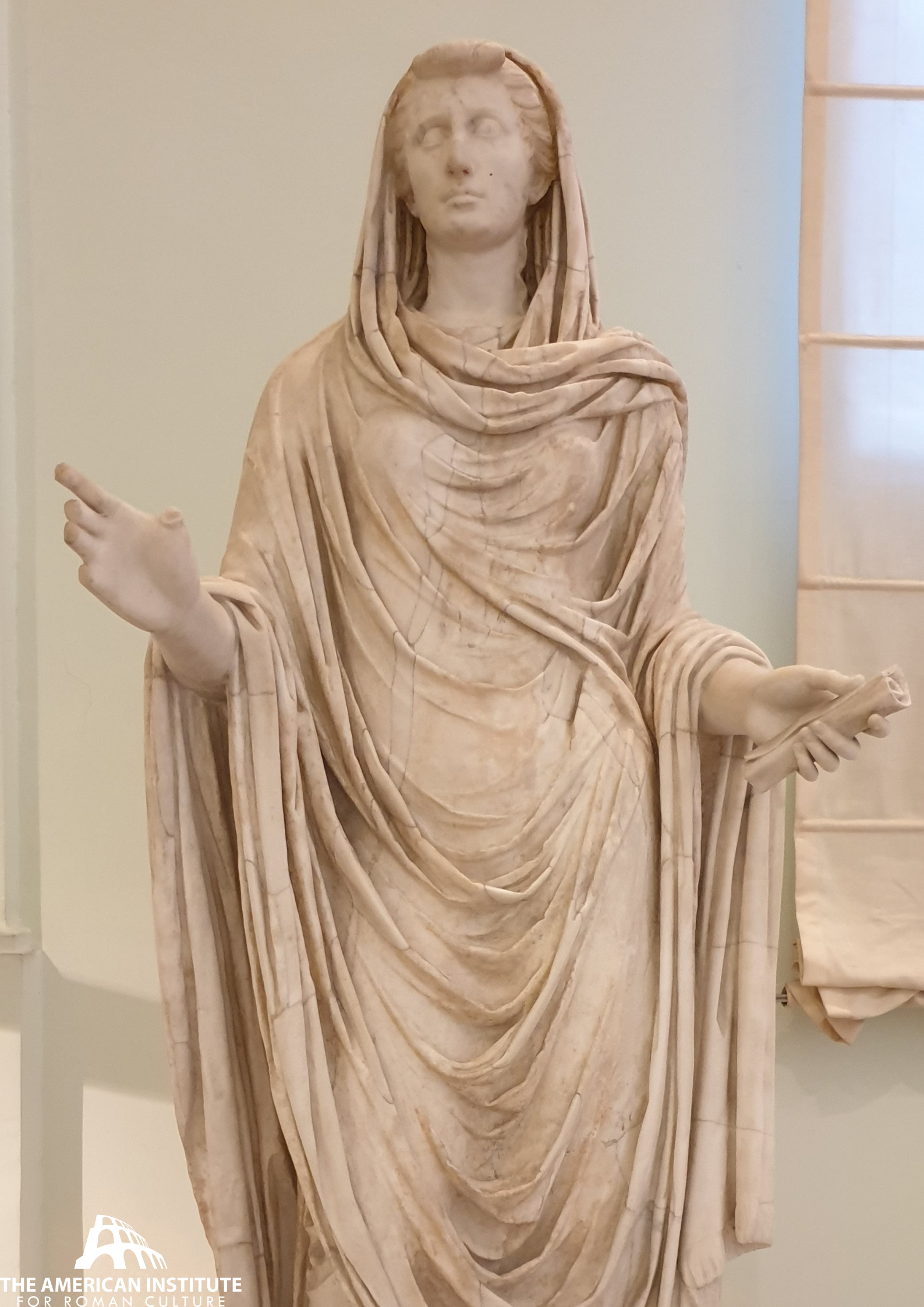Official Name: OCTAVIA MINOR
Birthdate: Disputed, likely born between 69 and 66 BCE.
(Suetonius, Life of Julius Caesar, 27)
Birthplace: Nola, Italy
Reign: Octavia’s younger brother, Octavian, became Rome’s first emperor in 27 BCE.
(Suetonius, Life of Augustus, 17)
Marriages:
Gaius Claudius Marcellus (? – 40 BCE)
(Suetonius, Life of Julius Caesar, 27)
Mark Antony (40 BCE – 33 BCE)
(Plutarch, Life of Antony, 57) (Cassius Dio, Roman History, 50.3)
Children:
Claudia Marcella Major (daughter by Gaius Claudius Marcellus)
Claudia Marcella Minor (daughter by Gaius Claudius Marcellus)
Marcus Claudius Marcellus (son by Gaius Claudius Marcellus)
Antonia Major (daughter by Mark Antony)
Antonia Minor (daughter by Mark Antony)
(Suetonius, Life of Augustus 63) (Plutarch, Life of Antony, 87)
Death:
Octavia died of natural causes in 11 BCE.
(Suetonius, Life of Augustus, 61)

Statue identified as Octavia, National Archaeological Museum Naples, Italy, October 2019

Portrait of Octavia, Palazzo Massimo alle Terme, Rome, December 2018.

Cast of the portrait of Octavia, Ara Pacis Museum, Rome, February 2019.
40
(Plutarch, Life of Antony 57) (Cassius Dio, Roman History, 50.3)
27
(Cassius Dio, Roman History, 49.38)
11
(Suetonius, Life of Augustus, 29) (Cassius Dio, Roman History, 49.43)
This content is brought to you by The American Institute for Roman Culture, a 501(C)3 US Non-Profit Organization.
Please support our mission to aid learning and understanding of ancient Rome through free-to-access content by donating today.
Cite This Page
Cite this page as: Darius Arya, The American Institute for Roman Culture, “Octavia” Ancient Rome Live. Last modified 09/09/2021. https://ancientromelive.org/octavia/
License
Created by The American Institute of Roman Culture, published on 09/08/2021 under the following license: Creative Commons: Attribution-NonCommercial-ShareAlike. This license lets others remix, tweak, and build upon this content non-commercially, as long as they credit the author and license their new creations under the identical terms. Please note that content linked from this page may have different licensing terms.


